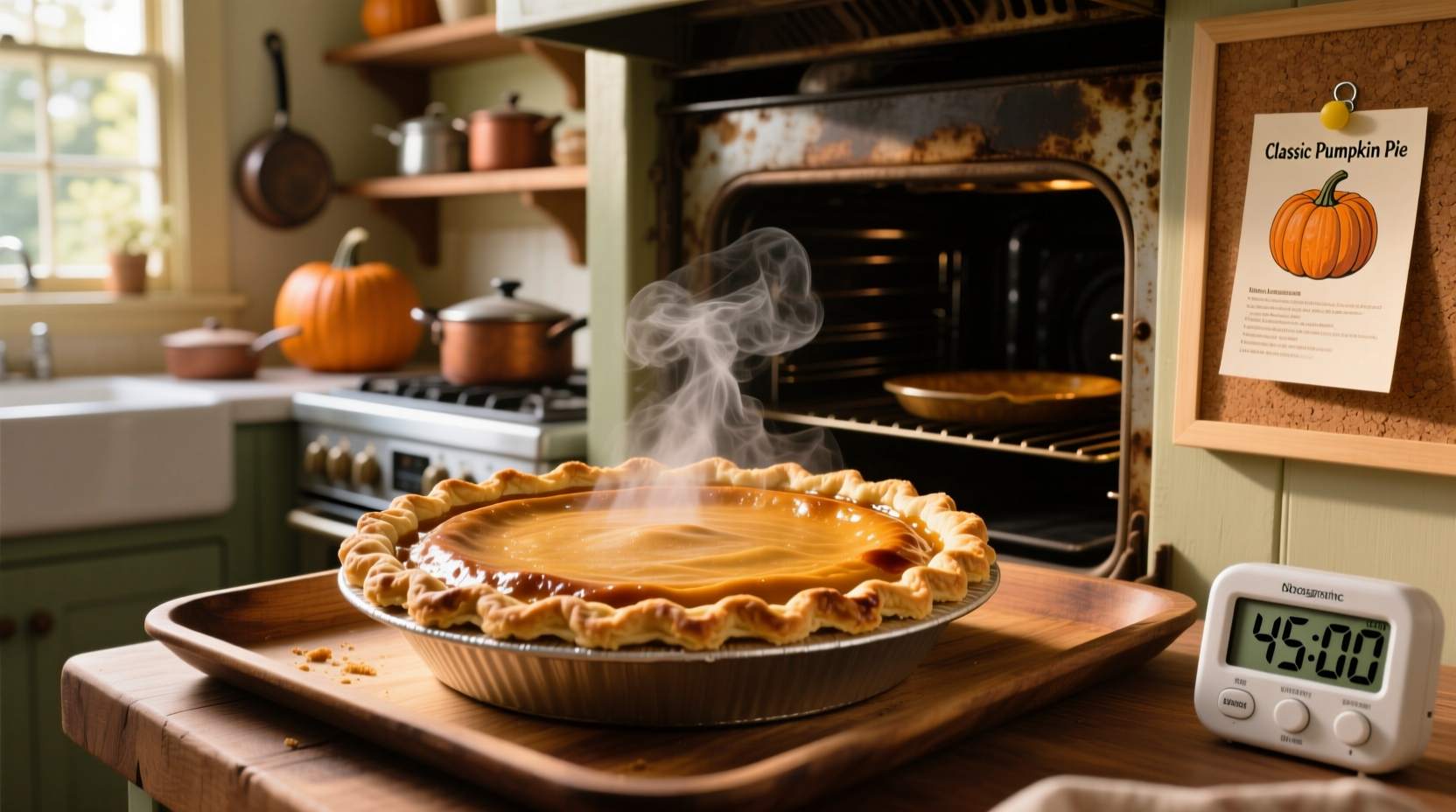The Science Behind Perfect Pumpkin Pie Baking
Getting your pumpkin pie timing right isn't just about setting a timer—it's understanding the delicate balance between custard chemistry and oven physics. Pumpkin pie filling is essentially a custard, which means it's an emulsion of eggs, dairy, and pumpkin puree that transforms from liquid to set structure through careful heating.
Factors That Affect Your Baking Time
While 50-60 minutes is the standard guideline, several variables impact your actual baking time:
Oven Calibration Matters
Did you know most home ovens vary by as much as 25°F from their set temperature? An oven thermometer is the professional baker's secret weapon for accuracy. A 325°F oven might actually be running at 300°F, adding 10-15 minutes to your baking time without you realizing it.
Pie Size and Depth Variations
The depth of your pie dish significantly impacts cooking duration. Standard 9-inch pies typically use 1¼ to 1½ inches of filling, but deep-dish versions require additional time. Here's a verified reference guide from the USDA Food Safety and Inspection Service:
| Pie Size | Recommended Time | Internal Temperature |
|---|---|---|
| 9-inch standard | 50-60 minutes | 175-180°F |
| 9-inch deep dish | 60-70 minutes | 175-180°F |
| 8-inch standard | 45-55 minutes | 175-180°F |
| Mini pies (4-inch) | 25-35 minutes | 175-180°F |
This data comes from the USDA Food Safety and Inspection Service guidelines for egg-based desserts, which pumpkin pie falls under due to its custard nature.
Step-by-Step Baking Process
Preheating and Preparation (5 minutes)
Always preheat your oven completely before baking. Rushing this step leads to inconsistent results. While your oven heats, prepare your pie by:
- Blind baking the crust for 10-15 minutes if using a homemade crust
- Brushing the crust with beaten egg white for a moisture barrier
- Positioning the oven rack in the lower third of the oven
The Critical First 30 Minutes (30 minutes)
During the initial baking phase, the edges begin to set while the center remains liquid. This is when most beginners make the mistake of opening the oven too frequently, causing temperature fluctuations that lead to cracking. Set a timer but resist checking until at least the 25-minute mark.

The Setting Phase (20-30 minutes)
This is where precision matters most. The filling transitions from liquid to set custard. Watch for these visual cues:
- The edges should be completely set with no liquid movement
- The center should have a slight jiggle, like set gelatin
- The surface develops a thin, shiny film
Doneness Testing: Beyond the Timer
Don't rely solely on the clock. Professional bakers use multiple verification methods:
Temperature Check Method
Insert an instant-read thermometer into the center of the pie. The ideal internal temperature is 175-180°F (79-82°C). Going beyond 185°F risks curdling the custard.
Knife Test Method
Insert a thin knife about 1 inch from the center. If it comes out clean with no wet filling clinging to it, your pie is done. If it's still wet, continue baking in 5-minute increments.
Common Timing Mistakes and Solutions
Underbaked Pie (Soggy Center)
Symptoms: Liquid center, filling doesn't hold shape when sliced
Solution: Return to oven for 5-10 minute increments, checking temperature each time
Overbaked Pie (Cracks and Bubbles)
Symptoms: Surface cracks, visible bubbles, separation from crust
Solution: Unfortunately, overbaking cannot be reversed. For future pies, reduce temperature by 25°F and extend time slightly
The Resting Period: Why It's Non-Negotiable
Many home bakers cut into their pie too soon, not realizing that the residual heat continues cooking the custard during the cooling phase. Allow your pumpkin pie to cool at room temperature for at least 2 hours before refrigerating. This resting period allows the custard structure to fully set, preventing a runny filling.
Special Considerations for Different Ovens
Convection ovens require special attention as they cook more evenly but can dry out delicate custards. When using convection, reduce the temperature by 25°F and check for doneness 10-15 minutes earlier than standard guidelines. Gas ovens often have hotter bottom elements, so rotating your pie halfway through baking ensures even cooking.
Historical Evolution of Pumpkin Pie Baking Times
Pumpkin pie baking has evolved significantly since colonial times. Early American recipes from the 1700s called for baking in hearth ovens for "until done" with no specific timing—a testament to the baker's experience. The introduction of standardized oven temperatures in the early 20th century brought more precise timing guidelines. By the 1950s, with the rise of home ovens and standardized pie plates, baking times became more consistent. Today's precision baking reflects both technological advances and our deeper understanding of food science, particularly custard chemistry.
Storage and Serving Tips
For optimal flavor development, refrigerate your cooled pumpkin pie for at least 4 hours before serving. Properly stored, pumpkin pie maintains quality for 3-4 days in the refrigerator. If freezing, wrap tightly in plastic wrap and aluminum foil; it will keep for up to 2 months. Thaw in the refrigerator overnight before serving.











 浙公网安备
33010002000092号
浙公网安备
33010002000092号 浙B2-20120091-4
浙B2-20120091-4